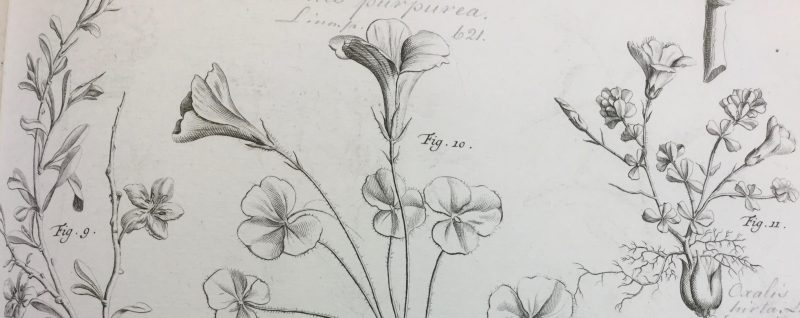
It’s not easy being a flaneuse in Amman – the city’s built on a series of hills and steep valleys. Dusty red limestone is never far away and pavements are consistently unreliable – often not there at all, and if so, broken and disconcertingly high, planted with trees right down the middle. The dry heat and constant traffic adds to travelling by foot’s lack of appeal. But after four days here, getting around by car, I feel the need to know where I am from the ground up, so this morning the air’s a little cooler and I venture out for a gentle stroll round the neighbourhood where I’m staying.
It’s hard not to feel self-conscious when no one else is out walking. Taxis keep tooting at me – a signal they’re available. I try looking both nonchalant and purposeful but probably just appear more and more strange as I keep stopping to inspect plants growing in the front gardens and along the roadside. While I’m photographing a mat of tiny red daisies creeping beneath a decapitated palm, a man who looks like he might be a gardener comes to see what I’m doing. He talks away to me in Arabic and I talk back at him in English, asking questions about the flowers of course he can’t answer. After a while, we part with smiles and nods, making peace with our mutual incomprehension.

Not far down Uhod Street the land to the west falls away and right there in the heart of this densely populated suburb I can see a flock of sheep – brown-wooled, semi-somnolent and fat – although it’s not clear what they might find to eat with not a blade of grass in sight. They really couldn’t be any more different from the sheep I see every day back on Stagshaw Fair – making me feel closer to home and impossibly distant at the same time. An encampment of cardboard shacks is perhaps where the shepherds live – urban bedouins. Another sort of flock – of construction workers – are perched on one of the many half-finished or abandoned buildings, clambering over great blocks of concrete, sprouting rusty iron rods, without the aid of scaffolding. ‘Luxury Homes’ says the sign.
Pretty flowers spill out from the railings of those luxury homes that are finished – plumbago, jasmine, bougainvillea. Hollyhocks, native here, have seeded themselves beneath olive trees and telegraph poles. Some of the grander houses have topiaried cypresses dissecting their stretch of pavement. The ‘pavement’, private rather than public space, speaks in many languages.

On the rougher patches of ground between housing lots the involucrate carline thistle and other prickly plants I’ve still to identify are well-adapted to take their chances with the rubbish, cigarette butts and random building materials. My feet get dustier and dustier and the coolness quickly dissipates giving way to more familiar relentless heat. Even though this part of Amman, Tla Al Ali, is one of the highest spots in the city (nearly 1000 metres – the same altitude as Scafell Pike) only the occasional breeze relieves the weight of the sunlight so close to the land here.
Over the course of an hour, I pass only one other person on foot – a man carrying a yoke on his shoulders strung with clusters of shocking pink candyfloss bagged in plastic. Later, back in my room, I hear him blowing a whistle like the Pied Piper to announce his presence and tempt the children. Today, Saturday, is the equivalent of our Sunday – the weekend, traditional family time, after Friday afternoon prayers. I lean over my balcony watching him climb the hill again with his vivid featherlight load, still whistling, but no one comes to buy. High as a bird, my arms are cooled by the smooth red-veined limestone beneath them. I have landed at last in this wondrous city of many layers.

I am staying in Amman as part of ‘Alta’ir: Durham-Jordan Creative Collaboration’, a partnership project between Durham Book Festival/New Writing North (co-founder), the Council for British Research in the Levant (CBRL) (co-founder), St Mary’s College, Durham University (co-founder) and Dr Fadia Faqir (initiator and co-founder) and the British Council.
CBRL website is http://cbrl.org.uk/
CBRL’s British Institute in Amman accommodation: http://cbrl.org.uk/british-institute-amman/accommodation
There’ll also be posts on the Durham Book Festival blog and an event with my fellow Jordanian exchangee Mofleh Al Adwan on Sunday 14th October, 12 – 1pm. See Durham Book Festival website for booking details.
